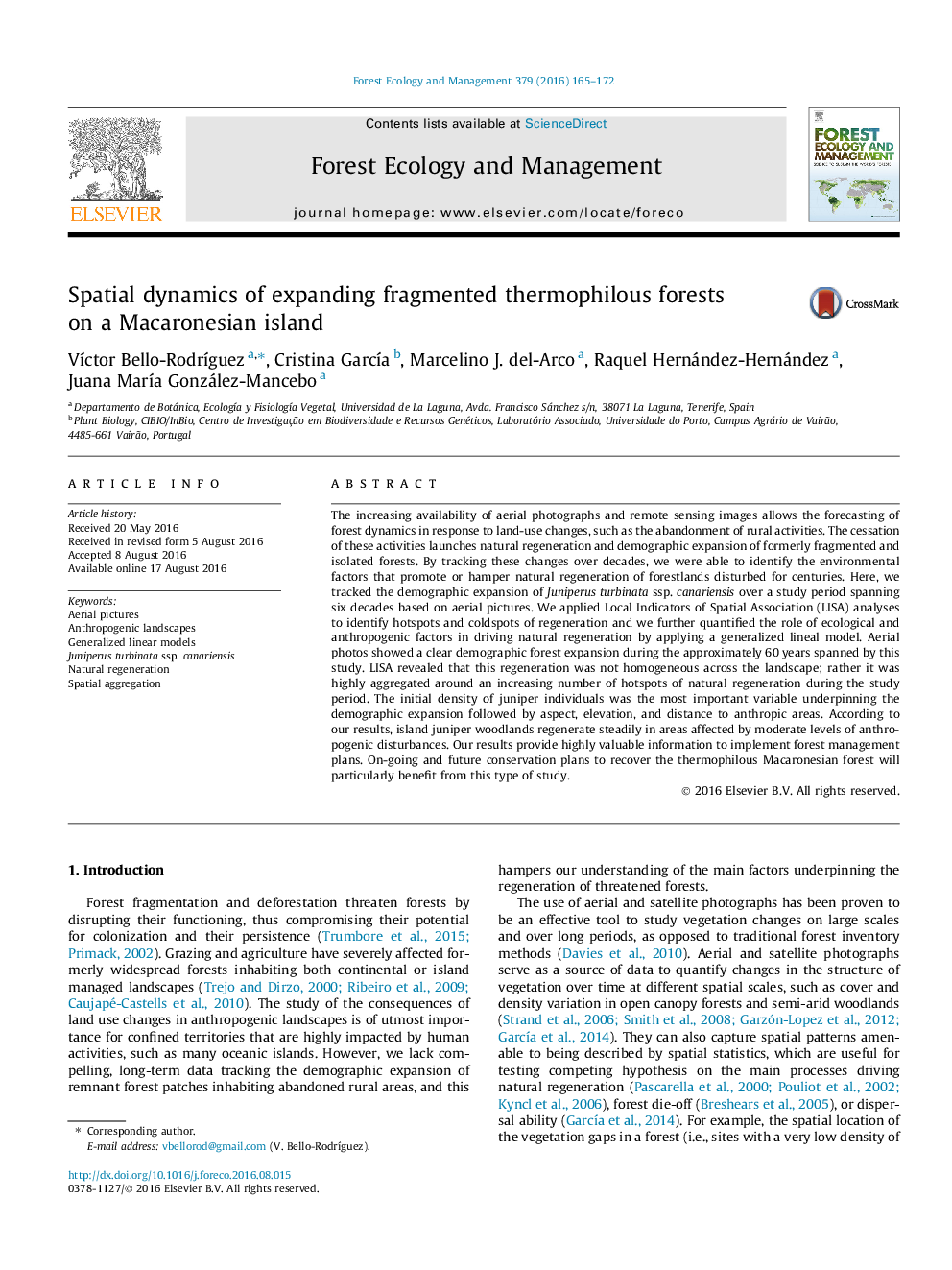| Article ID | Journal | Published Year | Pages | File Type |
|---|---|---|---|---|
| 6459635 | Forest Ecology and Management | 2016 | 8 Pages |
â¢Former juniper fragmented forests are recolonizing abandoned terrains.â¢We tested whether the level of human disturbance impacts forest regeneration success.â¢We applied aerial pictures and spatial statistics to test our hypothesis.â¢Initial density, aspect and distance to anthropic areas drove regeneration success.
The increasing availability of aerial photographs and remote sensing images allows the forecasting of forest dynamics in response to land-use changes, such as the abandonment of rural activities. The cessation of these activities launches natural regeneration and demographic expansion of formerly fragmented and isolated forests. By tracking these changes over decades, we were able to identify the environmental factors that promote or hamper natural regeneration of forestlands disturbed for centuries. Here, we tracked the demographic expansion of Juniperus turbinata ssp. canariensis over a study period spanning six decades based on aerial pictures. We applied Local Indicators of Spatial Association (LISA) analyses to identify hotspots and coldspots of regeneration and we further quantified the role of ecological and anthropogenic factors in driving natural regeneration by applying a generalized lineal model. Aerial photos showed a clear demographic forest expansion during the approximately 60Â years spanned by this study. LISA revealed that this regeneration was not homogeneous across the landscape; rather it was highly aggregated around an increasing number of hotspots of natural regeneration during the study period. The initial density of juniper individuals was the most important variable underpinning the demographic expansion followed by aspect, elevation, and distance to anthropic areas. According to our results, island juniper woodlands regenerate steadily in areas affected by moderate levels of anthropogenic disturbances. Our results provide highly valuable information to implement forest management plans. On-going and future conservation plans to recover the thermophilous Macaronesian forest will particularly benefit from this type of study.
